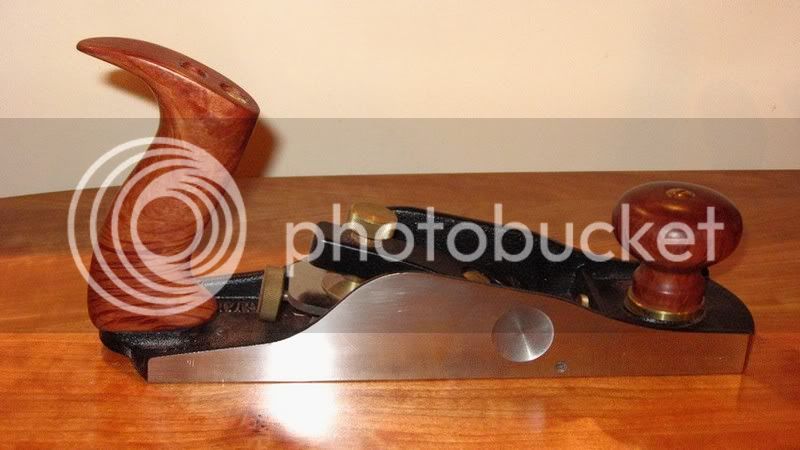Before I start, this isn't so much a question, as an invite to challenge my opinions; which, as far as I can see, run a little contrary to the accepted wisdom of the forum*.
Anyway, reading the posts (for there are two) on the Faithful Tools 7-piece set, there were certain statements I found myself disagreeing with, I don't mean to engage in an argument over the specifics, but I'm going to 'quote snipe' a little, to help me order my thoughts...
First, from the thread in Buying Advice:
Second, from Hand tools
In short, I propose that "functionality" and "durablity" are the only real measures of tool quality worth serious consideration; everything else is the icing on the cake... Extranious,Delicious and very much Tempting.
*(fora, in my experience tend to have certain ideas which are taken as being axiomatic by established members; groups of people seem to be like that )
)
Edit:
**(and in this case, risks gaining an uneccesarily offensive connotation; So if it comes over that way i can only say sorry Fromey, I don't know your work to comment on it and the statement is not intended to be targeted or personal.)
Anyway, reading the posts (for there are two) on the Faithful Tools 7-piece set, there were certain statements I found myself disagreeing with, I don't mean to engage in an argument over the specifics, but I'm going to 'quote snipe' a little, to help me order my thoughts...
First, from the thread in Buying Advice:
I'm all for the idea that you get what you pay for... However, I also subscribe to the notion that the functional benefit of improved quality is inversely proportional to the increase in price. You pay an awful lot extra to iron out minor niggles, which are perfectly deal-with-able.morfa":126yq1ni said:When you think that a 'decent' brand new no 4 plane starts at over £100, then...
Second, from Hand tools
It's an oft quoted aphorism that "a bad workman blames his tools"... Like all laconic phrases, It looses much through its lack of context**, better perhaps is "a good workman knows why their tools are to blame". Choosing to buy a better tool, may improve things; but determining why the tool is deficient, is a more worthy endeavour and may even allow you to get the results you desire in spite of the issues.Fromey":126yq1ni said:The No. 4 however is a piece of garbage and I only really understood it was garbage until after I bought my Qiangsheng no. 4 and so could compare. Initially I thought it was just me not knowing how to set and use the plane, but now I'm convinced it's the plane.
In short, I propose that "functionality" and "durablity" are the only real measures of tool quality worth serious consideration; everything else is the icing on the cake... Extranious,Delicious and very much Tempting.
*(fora, in my experience tend to have certain ideas which are taken as being axiomatic by established members; groups of people seem to be like that
Edit:
**(and in this case, risks gaining an uneccesarily offensive connotation; So if it comes over that way i can only say sorry Fromey, I don't know your work to comment on it and the statement is not intended to be targeted or personal.)

































